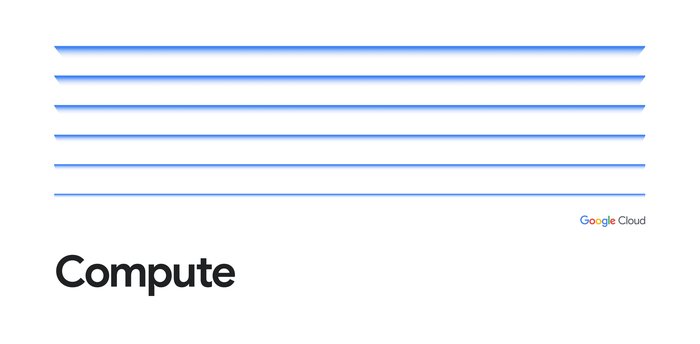What’s new in Google Cloud’s workload-optimized infrastructure

Mark Lohmeyer
VP & GM, AI & Computing Infrastructure
Nirav Mehta
VP, Google Cloud Compute Platform
Performance and reliability needs have grown exponentially for most workloads — from traditional enterprise workloads such as custom three-tier apps, to business-critical workloads such as SAP, to high performance computing (HPC). Add generative AI into that mix, and there are a dizzying number of performance requirements for your cloud infrastructure. Simply relying on hardware advances is not enough, especially with the slowing of the benefits from Moore’s Law. We need new, intentional approaches to infrastructure to meet today’s exponential computing demands.
At Google, we’ve been preparing for this new reality with workload-optimized infrastructure using a combination of purpose-built infrastructure, prescriptive architectures, and an open ecosystem. The end result is better performance, reliability, and security for your most compute-intensive workloads.
Today at Google Cloud Next, we announced several additions and enhancements to our workload-optimized infrastructure portfolio that can enable your workloads to thrive on Google Cloud:
- 3rd gen Compute Engine instances and our next-gen Hyperdisk block storage can deliver big benefits in performance for a broad set of workloads powered by the Titanium system
- New H3 VM and Parallelstore managed parallel file service, designed for HPC workloads, enabling up to 3x the performance per instance and up to 2x better price performance compared to C2
- New and improved VM uptime SLA of 99.95% for memory-optimized VMs (typically used for mission critical databases such as SAP HANA) — the highest among the three leading cloud hyperscalers
- New Workload Manager for SAP capabilities help secure SAP workloads and enable guided deployment
- New shapes for VMware Engine enable a broader range of vSphere-basedworkloads
- New Future Reservations capability helps customers gain better capacity assurance
3rd generation C family instances
Our 3rd gen virtual machine instances deliver strong advances in performance, powered by Google’s Titanium system of offloads that includes our custom Infrastructure Processing Unit. All these new instances support Google Kubernetes Engine (GKE) on day 1, and are optimized for consistent performance. The C family of instances can be the optimal choice for workloads such as web, app and ad servers, databases and caches, game servers, analytics, media streaming, and network appliances.
C3 VMs with improved performance
Earlier this year, C3 VMs, powered by the 4th Gen Intel Xeon Processors, became generally available. C3 delivers on average 35% better price-performance compared to the previous-generation Intel C2 VMs (see the C3 GA blog post for more performance benchmarks). C3 offers the new Intel AMX accelerator for distributed, low-latency, deep-learning CPU inference workloads, improving inference performance by up to 12x compared to its predecessor AVX-512. And today, C3 VMs support for Hyperdisk Extreme is now in preview and supports 500K IOPS — the fastest among leading cloud hyperscalers.


“C3 delivers up to 2.5x better storage throughput compared to N2 VMs and up to 40% lower CPU load when serving the same workload. This performance enables our customers to scale up larger, higher throughput databases and run the same high-performance workloads as today on smaller and more cost-effective resources. The reliability of C3's performance is critical for our customer's most business-critical workloads.” - Adik Sokolovski, Chief R&D Officer, Silk
C3D VMs based on 4th Generation AMD EPYC™ Processors
We are excited to announce a preview of C3D VMs, coming next month. C3D offers the largest instance sizes in our general-purpose portfolio with up to 360 vCPUs and 2.8TB of DDR5 memory. Compared to N2D — the previous generation Compute Engine VM powered by AMD — C3D delivers on average 45% better performance measured across industry-standard benchmarks, web servers (Nginx), relational databases (MySQL), in-memory databases (Redis), data analytics (Spark SQL), and development workflows (code compiling).


“Testing on C3D showed our ad servers use 44% less CPU than N2D to serve the same amount of requests. More efficient processing of our API workloads results in lower ad-processing latencies that are critical in the world of Real-Time Bidding. This improved performance comes at a lower overall cost because we can run a smaller number of more efficient nodes.” - Ken Snider, VP of Technology Operations, Verve Group
C3A powered by AmpereOne processors
As customers have increasingly prioritized optimizing price and performance, Arm has gained importance because of single threaded performance. We are thrilled that the new Arm-based C3A (in preview next month), powered by AmpereOne processors will be in preview next month. This new Arm-based VM delivers up to 40% better* price-performance over our comparable current-generation x86-based VMs.
C3A instances offer predefined machines from 1 to 80 vCPUs with DDR5 memory, local SSD, and up to 100 Gbps networking. They will be supported by a broad range of ISVs.
Additionally, C3A instances are already integrated with a number of Google Cloud services, including GKE, Dataflow, Cloud Batch, and Dataproc so that developers building applications on Google Cloud can use C3A VMs with the services they are already using.


"We have observed a 20% increase in performance with lower cost and more linear scaling when using T2A. We are excited to test C3A for further price/performance benefits." - Cyril Corbon, DevOps Architect, Dailymotion
A comprehensive HPC solution
In addition to the C family, we recently announced new H3 VMs purpose-built for high performance computing, offering full core performance without compromising on any tightly coupled placements or advanced networking capabilities.
One of the standout features of H3 VMs is their ability to provide up to 200 Gbps low-latency networking thanks to the latest 4th generation Intel Xeon platform, providing exceptional performance for compute-intensive tasks. H3 VMs also benefit from Google’s Titanium system of offloads.
H3 offers up to 3x improvement in per-node performance, 2x lower cost per job, and improved scalability for multi-node workloads compared to the prior generation C2 instances
To support HPC workloads, today, we recently announced the preview of Parallelstore, Google's fully managed parallel file system for HPC workloads, built on Intel DAOS.
New and improved VM uptime SLAs
We stand behind the reliability of our platform. Starting today, we are announcing new and improved single instance VM uptime SLAs. We now offer a 99.95% uptime SLA for our memory-optimized VMs — the highest of the three leading cloud providers. For all other VMs families, we have increased the uptime SLA to 99.9% from 99.5% (also the highest among hyperscalers without any conditions on type of storage).
Hyperdisk delivers leading performance and savings
Last year, we announced Hyperdisk, our next-generation block storage starting with Hyperdisk Extreme. We are delighted to announce that C3 VMs now support Hyperdisk Extreme. Together, this combination delivers 500K IOPS/instance, the fastest IOPS among the three leading cloud hyperscalers. Hyperdisk Extreme is ideal for very demanding, data-intensive workloads such as SAP HANA.
Also new in preview today is SSD-based Hyperdisk Balanced, with up to 2x the performance of previous generation Persistent Disk SSD, Hyperdisk Balanced, for general workloads, performs 10x better than AWS (IOPS per volume) making it a strong fit for a broad spectrum of general-purpose workloads.
Recently, Hyperdisk Throughput became generally available, providing cost-effective and easy-to-use block storage for scale-out data analytics, with up to 7x the performance of the previous-generation Persistent Disk Standard.
Lastly, Hyperdisk Storage Pools is now in preview, a first among hyperscalers. It allows customers to provision capacity and performance in aggregate Pools, and then thinly provision Hyperdisk volumes from those pools. Coupled with built-in data reduction (compression and deduplication), Hyperdisk Storage Pools offer up to 40% lower* storage TCO than leading hyperscalers for database workloads.
Improved reliability and security for SAP workloads
To make it easier and more reliable to run SAP workloads in Google Cloud, we’re excited to announce that C3 is now certified for SAP, making it the first SAP-certified VM family on Intel 4th Gen CPU amongst hyperscalers.
Second, our new 99.95% uptime SLA for memory optimized VMs directly benefits SAP workloads that often run on these VMs.
Third, we are launching new Workload Manager capabilities for securing and deploying SAP workloads in preview. This includes new security rules to help check HANA security best practices, and new guided, in-console deployment automations that can take the toil away from configuring your SAP deployments, and help you validate the security of your SAP applications against best practices.
New options for VMware Engine to address more workloads
Google Cloud VMware Engine is a great home for VMware workloads in the cloud. With deep integration with Google Cloud networking and in the Google Cloud console, customers run their VMware workloads in Google Cloud while Google manages the underlying vSphere platform.
Coming to preview by October is a new node with 2TB RAM and options from 64 - 128 vCPUs and up to 50TB storage. Customers can bring more workload types to Google Cloud with these new shapes.
Also by October, VMware Engine will support three new storage options: NetApp Volumes, Filestore, and Storage-only (VSAN) nodes. These additional storage options will make it easier for customers to move workloads to the cloud without having to compromise on storage features that they use on-premises.
Future Reservations in preview
Future reservations is a new Compute Engine feature that allows you to reserve compute capacity for a future date. This can be useful for planned events that require scaling up resources, for example major retail events. By signaling your demand ahead of time with future reservations, you can gain the confidence you need that you’ll be able to get the capacity you need, when you need it.
The workload-optimized infrastructure advantage
These new products and capabilities directly augment the ability for many more of your workloads to thrive on Google Cloud. We invite you to learn more about our VM families and start running your workloads on Google Cloud today.
Register today for a complimentary digital pass to watch all Google Next ‘23 keynotes and get unlimited access to on-demand sessions including:
- SPTL 202 What’s next for architects and IT professionals
- ARC 216 Compute instances optimized to boost your workloads
- ARC 107 How RISE with SAP on Google Cloud accelerates innovation and business value
*As of August 2023, at list price, 50 to 150 TiB, peak IOPS of 25K to 75K and 25% compressibility
